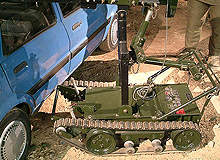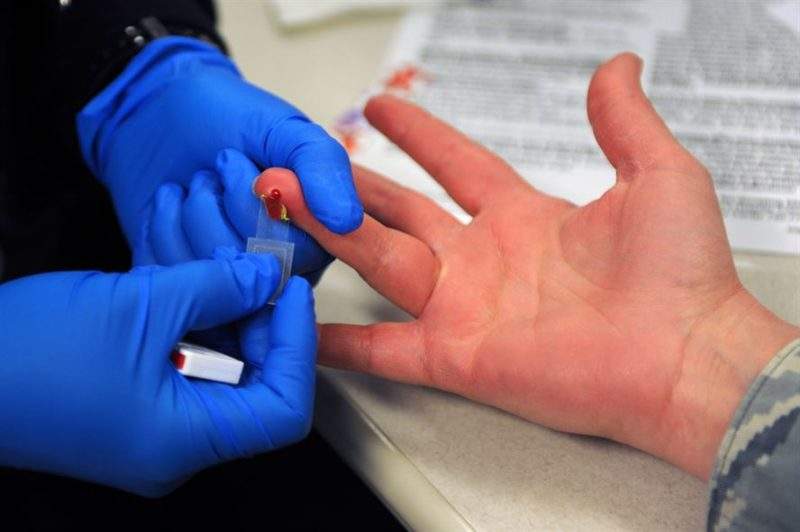
With coalition troops still engaged in combat in conflict zones such as Afghanistan, the use of improvised explosive devices (IEDs) continues to threaten their safety. In 2009, a total of 7,228 IED attacks were recorded and, of the 448 servicemen killed in action in Afghanistan, IEDs were responsible for 280 of them, representing 62.5%.
In order to minimise the threat IEDs pose to coalition troops, a growing number of deactivation techniques and technology are deployed. The art of bomb disposal itself is a tradecraft kept secret from public dissemination and for good reason too. By limiting access to knowledge of bomb disposal techniques, the enemy is deprived of technical procedure information.
Keeping information within a tight circle also hinders the development of anti-handling devices, such as procedure-resistant fuse designs. Techniques are also decided based on the situation and a number of variables. The most important of these variables is the proximity to people or critical facilities that could be affected by the blast. Actual handling of the bomb only occurs in extreme circumstances, such as when the IEDs proximity to civilians cannot be changed.
Engaging explosives remotely
With remote handling of any improvised device the preferred method of deactivation, the Wheelbarrow has become a vital tool.
See Also:
Designed by Lieutenant-Colonel Peter Miller in 1972 for use by bomb disposal teams operating in Northern Ireland, the Wheelbarrow is a remotely controlled robot outfitted with necessary equipment to identify munitions used in the device.
How well do you really know your competitors?
Access the most comprehensive Company Profiles on the market, powered by GlobalData. Save hours of research. Gain competitive edge.

Thank you!
Your download email will arrive shortly
Not ready to buy yet? Download a free sample
We are confident about the unique quality of our Company Profiles. However, we want you to make the most beneficial decision for your business, so we offer a free sample that you can download by submitting the below form
By GlobalDataCameras, microphones and sensors to detect chemical, biological and nuclear material all feature, and the system is used to highlight the key components of the device and relay that information to bomb disposal teams, allowing them to identify the ideal course of action.
Additional devices can also be attached to the Wheelbarrow in order to increase its efficiency in detecting and defusing IEDs. One such device is the Tanglefoot, adopted by coalition forces in March 2010 and attached to 8,000 robotic assets deployed in the field. The system is used to clear routes for army personnel by using a basic mechanical wire mitigation system to uncover trip wires attached to the devices.
Since its inception in 1972, the Wheelbarrow has become a device that has continually evolved in order to meet the demands of the armed forces that use it, and responded to the types of threat and devices it is used to defuse. One such evolution is the use of water as a tool to help in the deactivation of IEDs.
Water weapons
The use of water as a weapon against explosive devices is a trend that continues to be met with great success. Projected Water Disruptors utilise a water projectile shaped charge to destroy IEDs by severing any detonation cord inside the device, rendering it futile. These disruptors come in a directional format, known as a ‘Bootbanger’, and an omni-directional format, more commonly referred to as a ‘Bottler’, with a decision on the most suitable format made by the bomb disposal technician.
Disruptors of this nature have since come to be equipped to the Wheelbarrow device, enhancing its use in combat zones such as Afghanistan or Iraq when IEDs are often deployed within the vicinity of civilians. Percussion Actuated Neutralisers, or Pigsticks as they are more commonly referred to as, disable devices by firing propelled jets of water directly into the device with the aim of disrupting circuitry.
A slight drawback to these methods, however, is the need to be within direct vicinity of the explosive. Putting expensive machinery that is vital to troop safety in such a position may not be the best option available, particularly when new, laser-fuelled technology can neutralise such a threat from a safe distance.
Deactivation from a distance
The HMMWV Laser Ordnance Neutralisation System (HLONS), more commonly referred to as ZEUS, was originally developed to defuse land mines through the use of a moderate-power solid state laser and beam control system in order to remotely defuse explosive devices and unexploded ordnance.
The system uses a 10kW solid-state heat capacity beam aimed at the target, heating the ordnance to the point of causing the explosive filler to ignite and start to burn.
As a result, a low-level explosion is caused and minimal collateral damage obtained, and the specific type of ordnance, trigger or detonation does not matter.
Attached to a Humvee, the ZEUS-HLONS system has the capability to engage targets 25m-300m away in the vehicle’s line of sight, and its ability to be fired up to 2,000 times per day increases its use to coalition forces active 24/7 in theatre.
ZEUS was first deployed to Afghanistan in 2003, where it was used at Bagram Air Base as part of Operation Enduring Freedom, and neutralised in excess of 200 munitions of 10 separate types, demonstrating its high efficacy rate. As of March 2005, the system was deployed to Iraq to assist in explosive ordnance disposal activities and is currently used by the US military in the country, marking the first battlefield use of any laser weapon.






